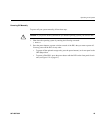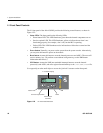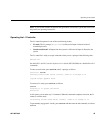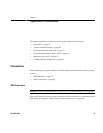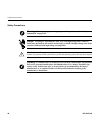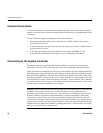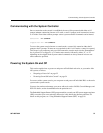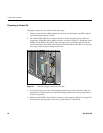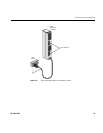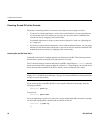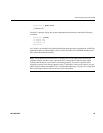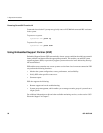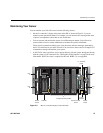
50 007-4857-002
2: Operation Procedures
Console Connections
A console is defined as a connection to the system that provides access to the system controller
network. A console can be a personal computer (Ethernet connection) or a dumb terminal (serial
connection).
The Altix 450 series supports multiple types of console connections:
• An ethernet connection on the system control board of an IRU - an RJ45 connection is
typically labeled “L2 host”
• A serial connection to the serial console port on the system control board - a DB9 connector
typically labeled “Console”
• A 2D video card installed in the base I/O blade (not available with RHEL 5) - this
low-profile PCI video interface card requires use of a USB keyboard and mouse
Connecting to the System Controller
The ethernet connection is generally the preferred method of accessing the system console.
Depending on the size of the system, there will be one or more ethernet connections utilized.
When an enclosure is connected to the LAN, the system controller will start the ethernet interface
with either the pre-assigned IP address or will attempt to acquire an IP address via DHCP, and will
then spawn the L2 application. See the section on setting up an IP address for further details. Once
the system controller is connected to the LAN, it can be accessed via a simple telnet session. The
serial connection is used to communicate directly with the L1 system controller. This connection
is typically used for service purposes or for system controller and system console access in small
systems where an ethernet connection is not available.
Caution: An L1/L2 network connection must be kept on a private and physically secure network
connection. The System Controller does not provide software security, authentication, or
safeguards against malicious or careless users. The consequences of unauthorized access to the
System Controllers are potential system unavailability, system reconfiguration, and detailed
access to every aspect of the system. The recommended configuration for the L1/L2 network
connection is a separate, private and physically secure network attachment to an equally separate
and physically secure PC. Any Linux system hosting L3 software must be administered to prevent
unauthorized access.Optional L3 software is a package that runs on a Linux based PC. It is mainly
used by service personnel as a diagnostic aid.




